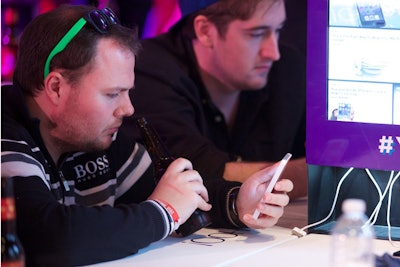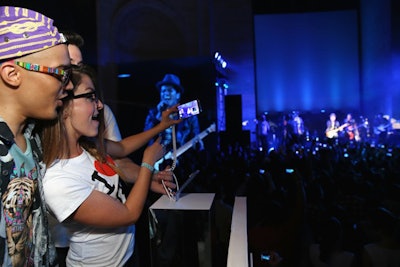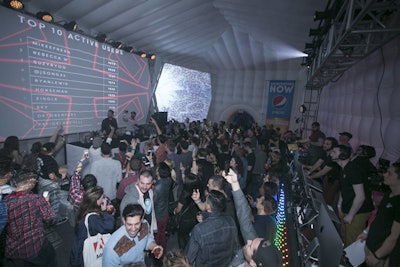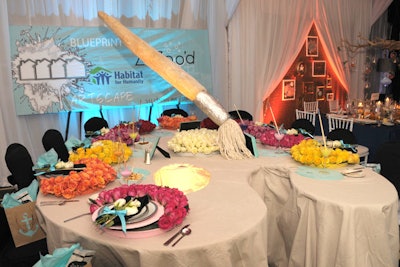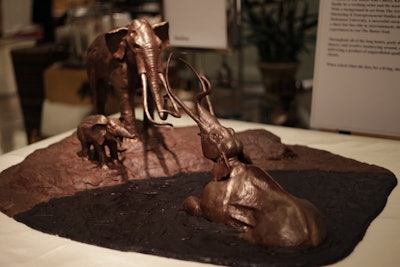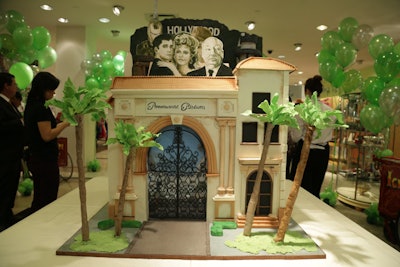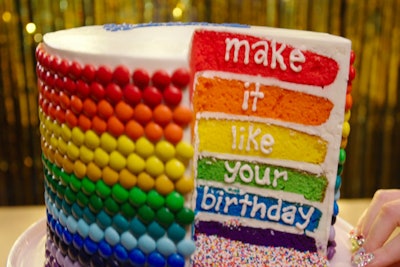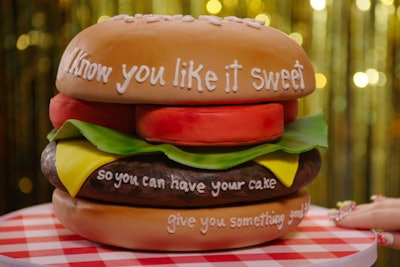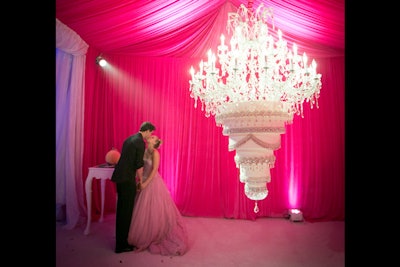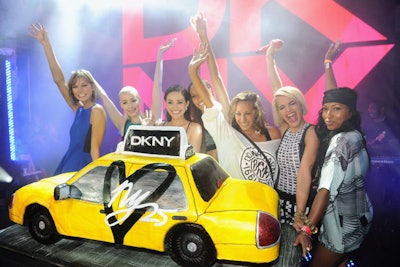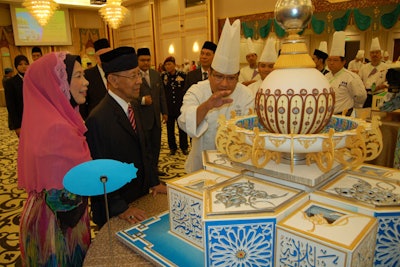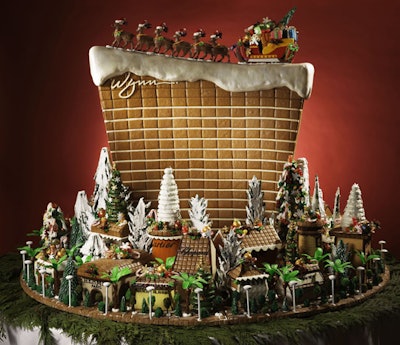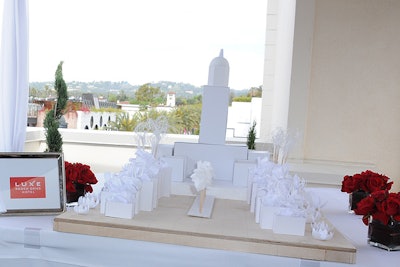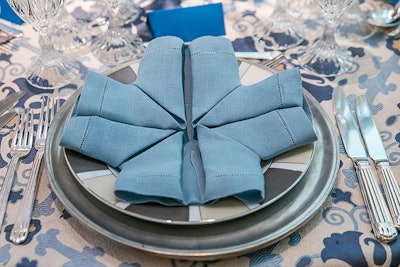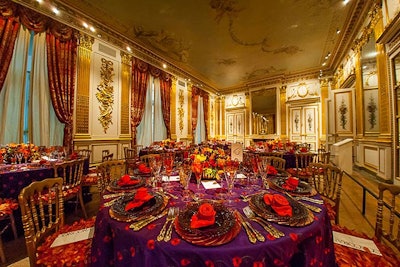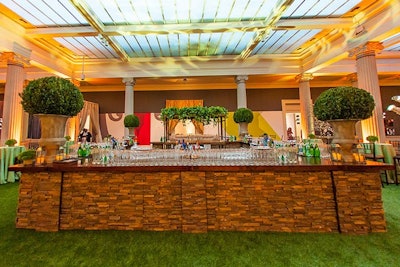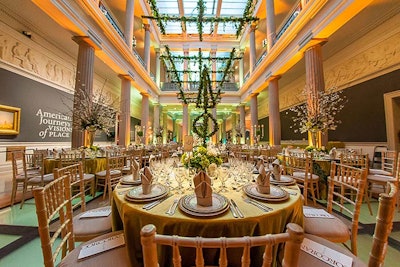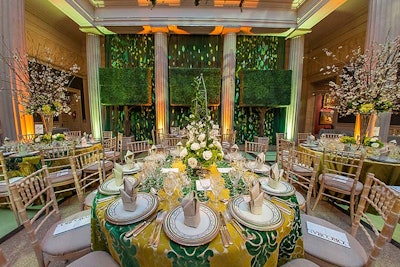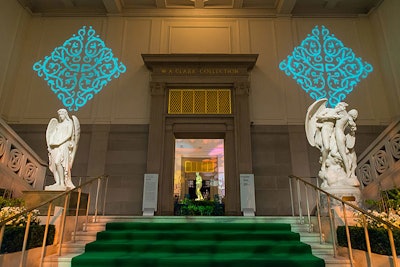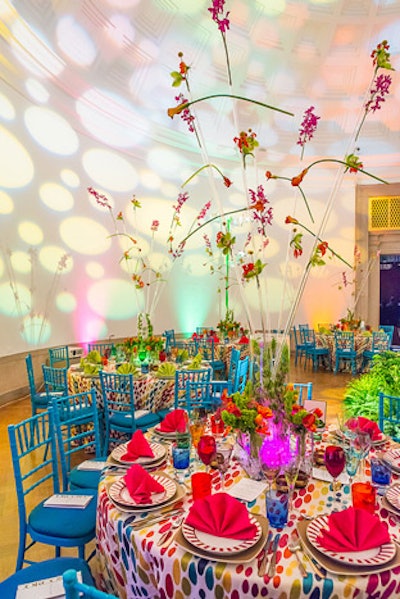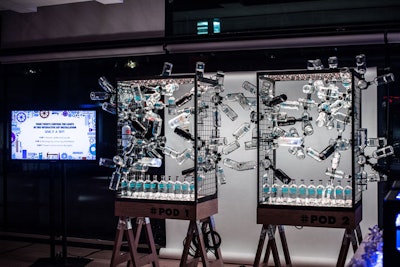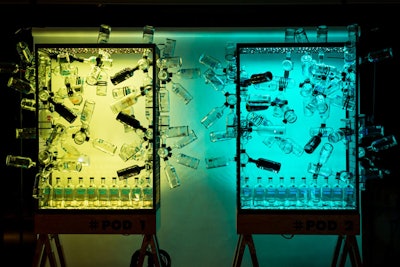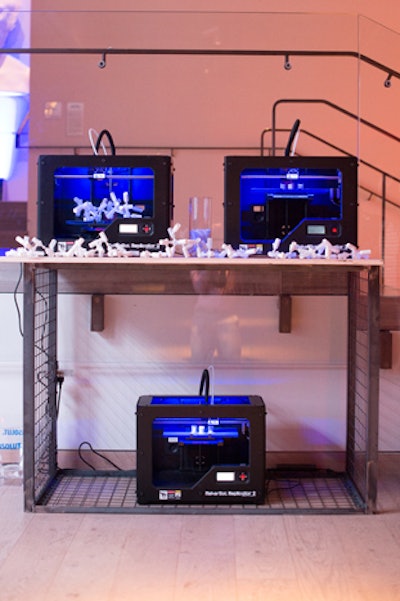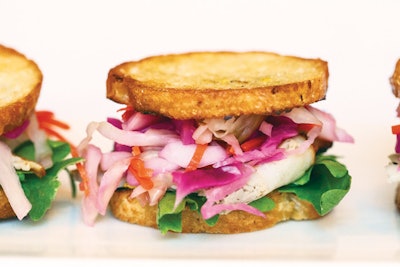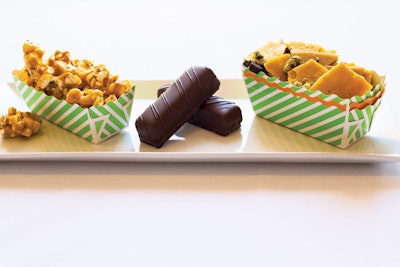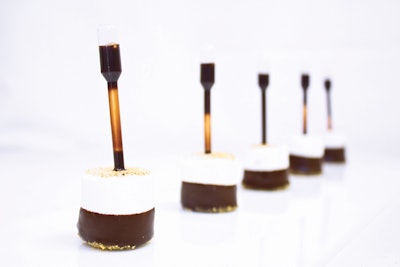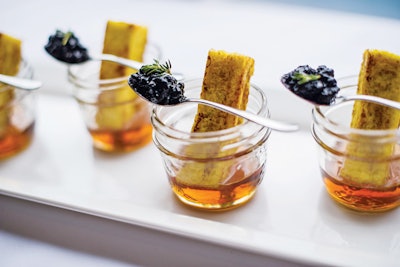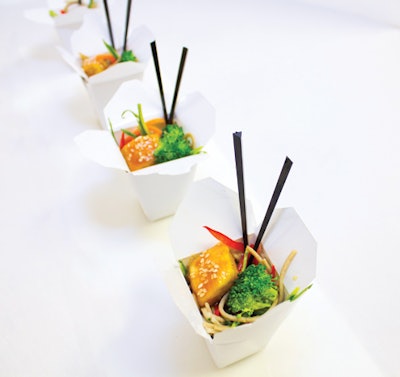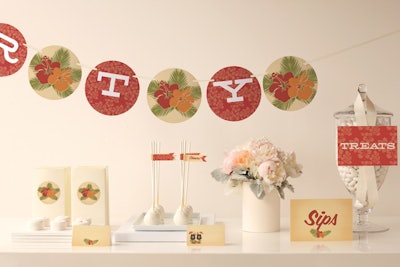

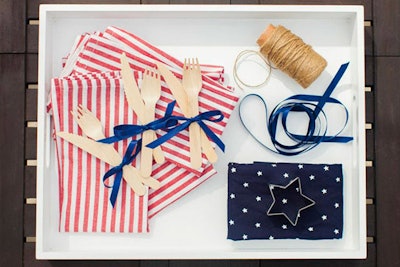
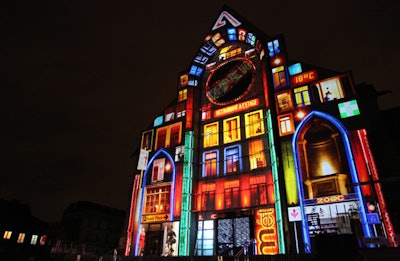
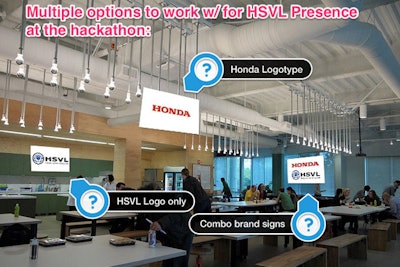
Skitch is an app from Evernote. The system allows users to add text, shapes, stamps, and drawings to images such as screenshots, photos, floor plans, and PDF files. The app is intended to be used in conjunction with an Evernote account, allowing the images to be saved and shared through the platform. The images can also be shared through Twitter, Facebook, email, or public URL.
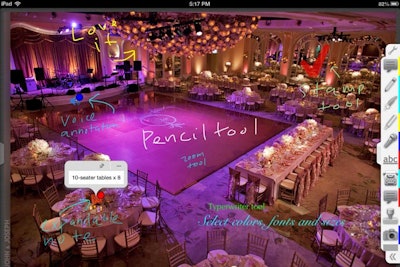
Intended for use with iPads, iAnnotate provides a variety of tools to add notes to images, PDF files, Word documents, and PowerPoint slide shows. Annotation can be added as text or voice notes, and there are tools for highlighting, underlining, and strike-through. Files can be shared through Dropbox, Google Drive, and other cloud-based services.
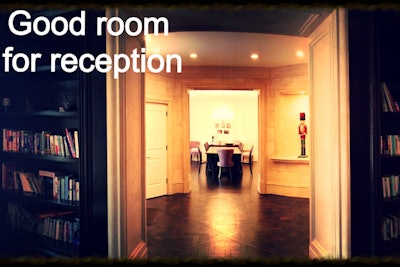
Cycloramic is an app that makes an iPhone spin 360 degrees to take panoramic photos and video. The app operates hands-free with an iPhone5 or in guided mode on other iOS devices. An update in June added an editing studio that allows users to add text and filters to photos. Images can be saved in the app’s library and shared via email or on social networks.
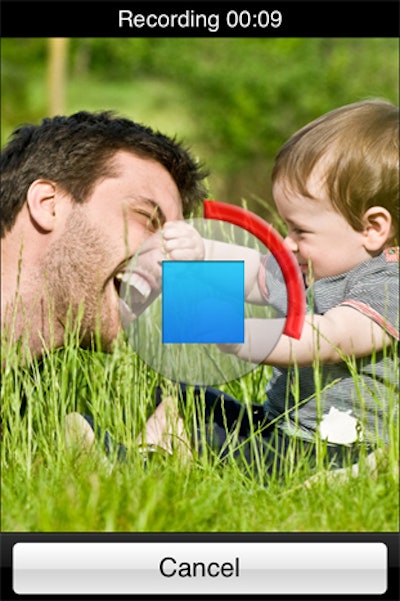
SpeakingPhoto allows users to add as many as 30 seconds of voice notes to a photo. Multiple photos can be compiled into a storyboard and then saved to the camera roll or shared via email, Facebook, or YouTube. An update later this month will allow users to combine eight images; the current version allows five. SpeakingPhoto is an app for iPhone and iPad, but the update will allow Android users to receive and play the photos.
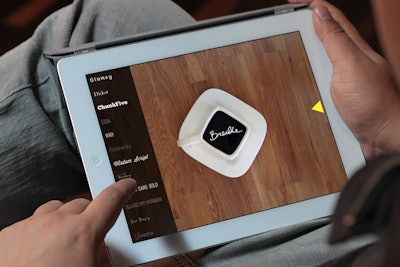
Over is an iPhone and iPad app that allows users to add artistic text and artwork to photos. The app offers more than 200 fonts. After adding text, users can save images to their camera roll or share via Instagram, Pinterest, Twitter, Facebook, or Tumblr.
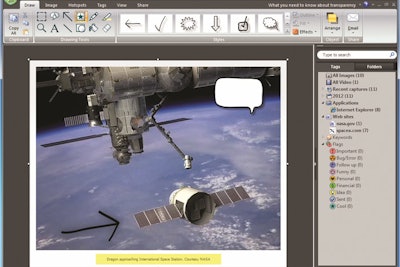
Snagit is a screen-capturing system. With one click, users can capture images, Web pages, or articles, and then add effects such as text, arrows, or highlighting. There’s also a blur tool to hide parts of the image. All of the captured images are saved to a library and can be searched by date, Web site, or keyword. Images can be shared via email, Facebook, Twitter, Evernote, and more.
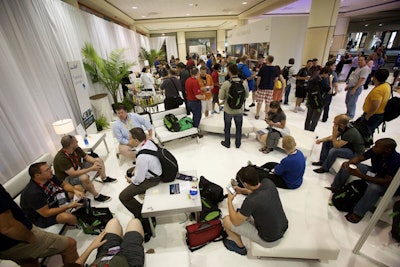
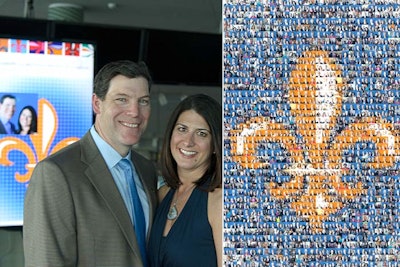
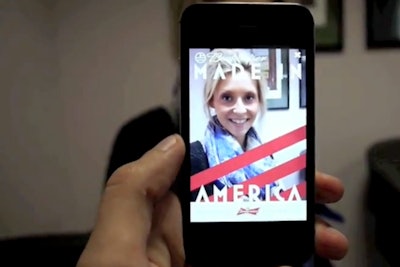

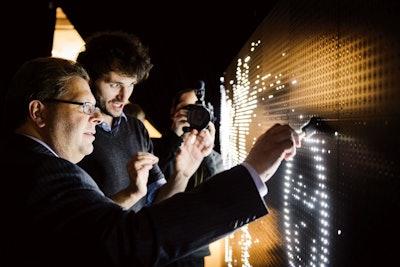
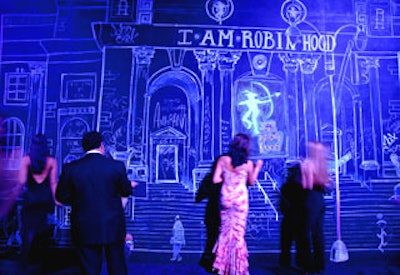
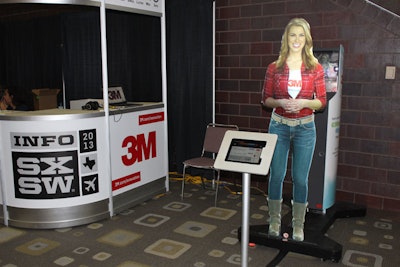
Throughout the festival in March, visitors were welcomed to the Austin Convention Center by "Jenny," an interactive digital avatar presented by 3M. The almost disturbingly lifelike avatar spoke to approaching guests and helped them locate panels and events.
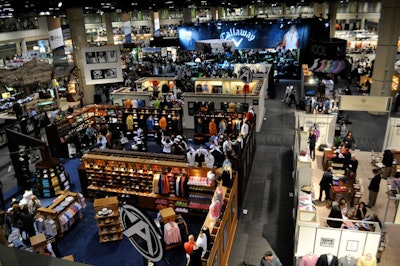
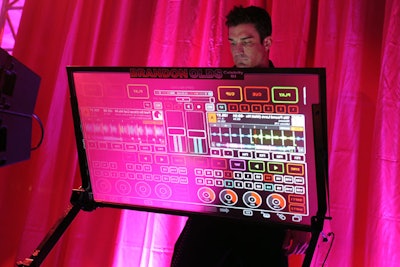
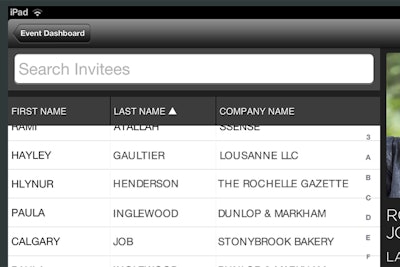
From the makers of Fashion GPS, an invitation, scheduling, and seating system used by the fashion industry since 2006, comes Events GPS. Launched in August, the service offers electronic invitations, mail merge, interactive seating plans, and on-site digital check-in that can be done with QR codes or with R.F.I.D. chips embedded in physical invitations. Events GPS has a Web-based system and a mobile app. Hosts can use the system to store contacts, including photos, and track which events people attended in the past, where they were seated, and other details. After the event, Events GPS can generate reports regarding attendee engagement.
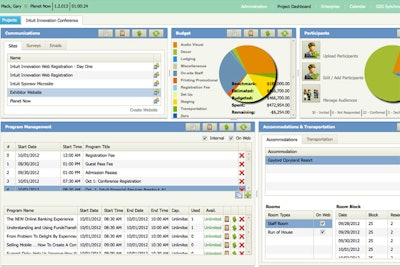
PlanetNow is a cloud-based event management system that launched in March. Planners use the system to create an event Web site, process registration, oversee transportation, coordinate venues and vendors, manage sessions and special events, and conduct surveys. The system’s mobile app has a matching algorithm integrated with LinkedIn and GPS services that helps attendees discover other people at the event with common interests or backgrounds.
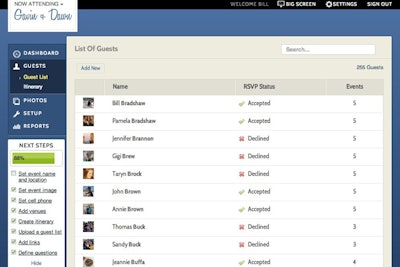
Available since March, Now Attending is intended to facilitate engagement at corporate and social events. Planners use the system to create a custom event site to manage R.S.V.P.s. If attendees connect their Facebook accounts when they register, the system will show which of their friends are also attending, their hotel selections, and more. The system will soon be integrated with LinkedIn, as well. At the event, attendees use the Now Attending mobile app to view their personalized agendas and communicate with the host and other attendees. To promote engagement, photos shared through the app can simultaneously be displayed on a large screen that can also include sponsor information and trivia about attendees, such as who traveled the farthest.
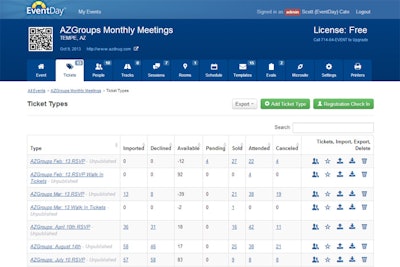
EventDay is an event management platform that launched last year. Planners create an event Web site to manage registration, attendee communication, badges, and coordination of speakers and exhibitors. The system can be integrated with digital signage at a venue to provide real-time updates to schedules and sessions. The system provides two mobile apps: one for the event host that provides information such as check-in status and sponsor management, and another for attendees that is focused on scheduling and session content. Hosts can also use EventDay to moderate questions during a session that attendees send via the app, texts, or Twitter; approved questions display on a large screen in front of the audience.
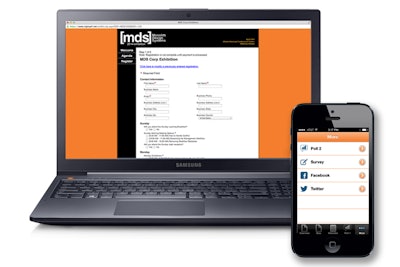
SignUp4 purchased RapidApp last year and has integrated it into its event management system. As planners build their event Web sites in SignUp4, the system automatically creates the identical elements in the mobile app. When attendees register on the Web site, the attendee list updates in the app. The app also provides location services integrated with Google Maps and allows attendees to share photos with one another. SignUp4 plans to link the app with its travel management system so planners can see attendees’ itineraries and attendees can receive real-time updates on flight delays or other changes on their mobile devices.
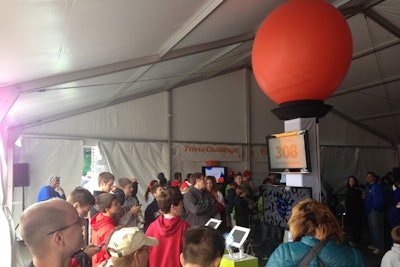
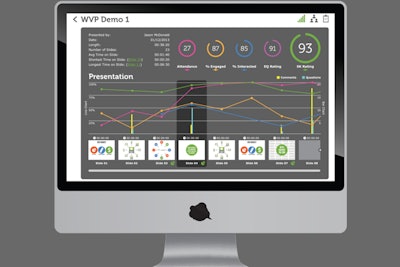
SlideKlowd launched in January and released an update Monday that offers integration with Twitter and Facebook. Presenters use SlideKlowd to push content to any mobile device running the app or accessing the system through a browser. There are 12 widgets that can be added to slides to get audience feedback—for example, Likert scales, multiple-choice ratings, and comments—and the presenter can choose whether to make the information visible. The new version gives users the ability to post comments to social media with the event hashtag and presenter’s Twitter handle automatically included. Audience members can also take a picture of a slide (called a “KlowdPic”) to include with comments. Following an event, the system provides analytics such as how many people shared and the feedback on individual slides.
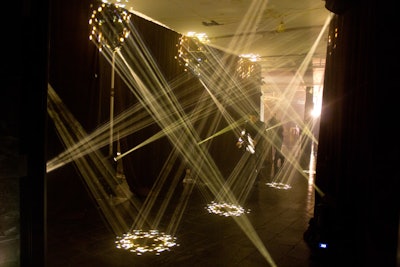
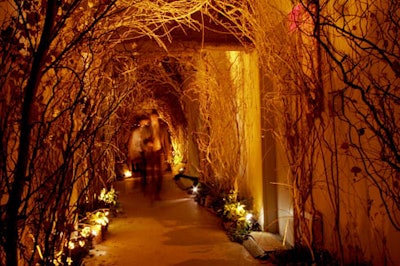
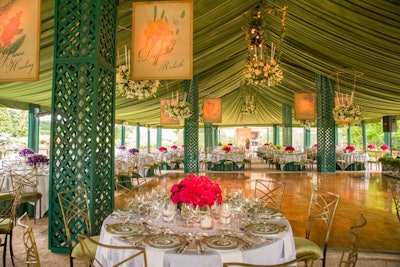
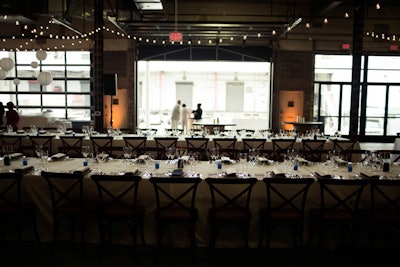
Now open directly above artisan food hall Union Market in Northeast is Dock5, a 13,000-square-foot event venue. The industrial warehouse space accommodates about 500 people. The raw space includes exposed concrete floors, 22-foot-high ceilings, and glass garage doors. Events at Dock5 can extend into the venue’s private outdoor alley.
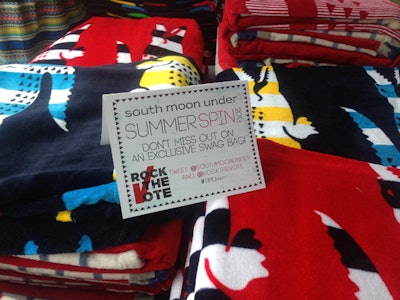
Retailer South Moon Under partnered with Rock the Vote for its inaugural Summer Spin Pool Party August 3 at the Embassy Row Hotel rooftop. To expand the reach of the intentionally intimate pool soiree beyond its 100 invite-only guests, event planner Jessica Hoy of NeuProfile put a social media spin on a familiar item: the gift bag. Converse, Lacoste, Stila, Kate Somerville cosmetics, and others contributed beach-related products like towels, sunglasses, and sunscreen to the gift bags. Hoy set up stations for each of the 11 sponsors with tent cards of the hosting brands’ Twitter handles and event hashtags. Bloggers and other partygoers took photos of the tables and wrote about the products individually rather than just collectively in a single story. Guests then showed a staffer their tweets on the way out to receive a bag.
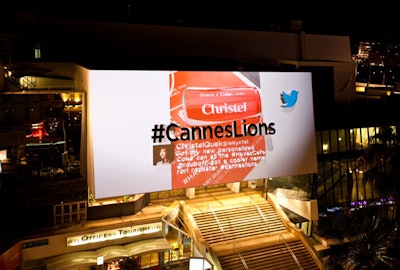
As the sun went down in Cannes, France, June 17, Twitter fired up a 40,000-lumens Barco projector mounted on a roof 150 feet across a street from the Palais des Festivals et des Congrès. The venue was the site of the Cannes Lions International Festival of Creativity, a weeklong award program to recognize creative excellence in advertising and communications. For the next several hours, a 3-D projection of tweets using the official event hashtag, #CannesLions, appeared on a 35- by 65-foot billboard located 30 feet above the venue’s entrance. The digital activation, created by Incredible Machines, ran for five hours that night and for the next three nights, while during the day the billboard showed a static image of the hashtag printed on canvas. The top tweets with the hashtag were projected onto the billboard at night, and the display also included live tweets from specific users that were selected by Twitter. The projection was a success, garnering substantial interest from the festival’s 12,000 attendees and contributing to more than 91,000 tweets using #CannesLions. That’s a 51 percent increase compared to 2012 and translated to a total reach of 542 million people, according to Buzz Radar. To generate excitement the first night, Twitter hosted a gathering in a penthouse across the street from the billboard right before the projector turned on.
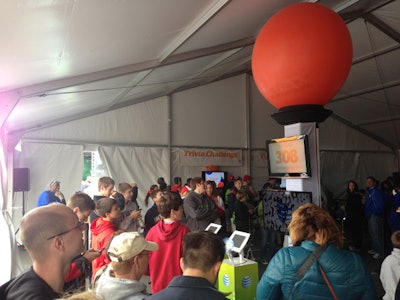
In an effort to find an innovative way to encourage tweeting at AT&T-sponsored events, Team Epic worked with Brightline Interactive to develop what it calls a “Twitter balloon”: a balloon six feet in diameter connected to an air compressor that is activated by tweets with a particular hashtag. “There are a lot of Twitter walls that show tweets as they come in, but this performs a physical action and it happens within less than a second,” said Andrew Knutson, manager for Team Epic. “As soon as you tweet, you hear the air going to the balloon, which is pretty cool. You’ll see crowds forming, especially as the balloon gets bigger.” AT&T unveiled the balloon at the N.C.A.A. Final Four men's basketball championship last spring and has since used it at events such as the Outside Lands Music & Arts Festival in San Francisco, the College World Series in Omaha, CMA Music Festival in Nashville, and Music Midtown in Atlanta. Signage at the events encourages attendees to tweet with a particular hashtag. Each tweet triggers a burst of air into the balloon, and the person whose tweet causes the balloon to pop wins a prize such as an AT&T phone.
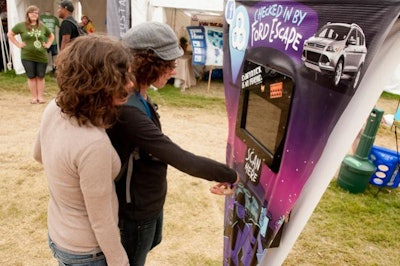
As the 80,000 attendees at last year’s Bonnaroo Music & Arts Festival celebrated on a Tennessee farm, news of their daily activities was posting to Facebook, creating nearly 1.5 million social impressions. But the attendees weren’t pulling out their smartphones to connect to Facebook; instead they were swiping wristbands with R.F.I.D. technology at one of 20 check-in portals around the 700-acre venue.
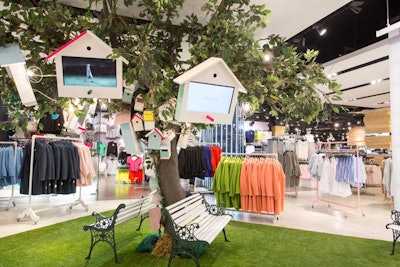
At London Fashion Week in September, Topshop tested a new app that allowed it to transmit photos, Web links, and other content to mobile devices using sound. The mobile app Chirp, available as a free download, shares data via a 1.8-second series of notes that sound similar to birdsong. The “chirps” played on speakers at the show in Regent’s Park and also in Topshop’s Oxford Circus store, where the retailer created what it called a “digital garden” with monitors suspended from trees like birdhouses. Folks within earshot of the speakers who had the app open on their phones instantly received the content, which included runway images, photos of the clothes being made, backstage activities, and hair and makeup preparations. Recipients could tap on the images to receive additional information, and they could also share the images via Twitter, Facebook, and email.
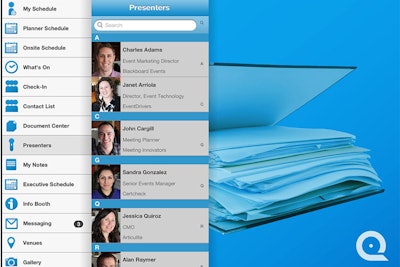
MobilePlanner is the newest app from QuickMobile. The product allows planners to manage documents, vendor contracts, maps, photos, event schedules, contacts, speaker information, menus, and more in one system that can be accessed on any device. Planners can manage multiple events simultaneously within the app, as well as allocate full or partial access to other team members. MobilePlanner can track progress and communication among people working on an event, and the organizers can also send push notifications for quick updates. At an event, the app indicates who has checked in and tracks details such as flight information, transportation, accommodations, and dietary needs. MobilePlanner debuted October 15.
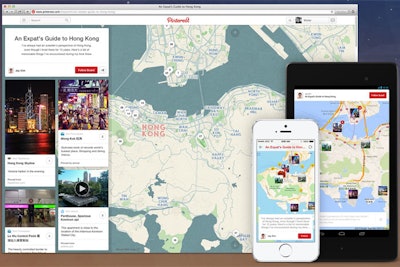
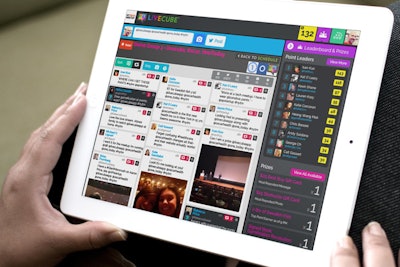
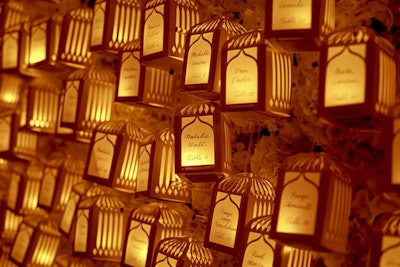

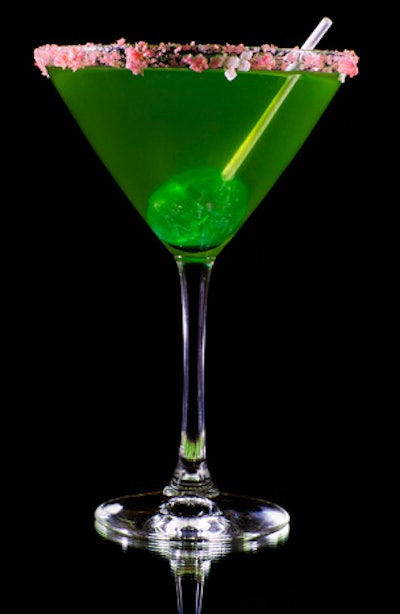
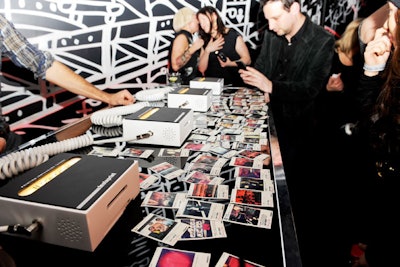
Earlier this month, Grey Goose hosted a launch party for its new Cherry Noir flavor at Thompson Hotel in Toronto. At the event, guests could use Instaprint, a location-based photo booth for Instagram designed with a specific hashtag, to print out keepsake photos. Some 365 images were printed out on site, but using the hashtag #cherrynoir, guests created more than 131,000 social media impressions that night.
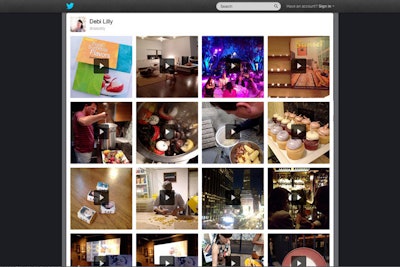
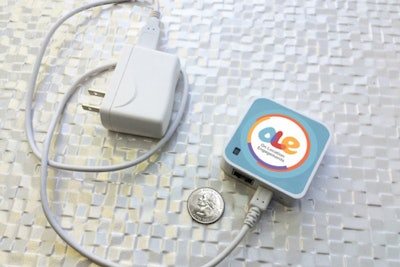
On Location Engagements is a location-based content delivery system for events. The company provides small beacons that use low-energy Bluetooth and Wi-Fi to communicate with attendees’ smartphones, both iOS and Android. Planners upload their floor plans into an online system and designate where they will place the beacons. Then they assign content such as maps, product information, videos, surveys, and sponsor materials to each beacon. Attendees either download the system's app, or it can be embedded into the event’s existing app. When attendees are within a designated range of the beacon—which can be anywhere from 5 to 30 feet—the content automatically appears on their devices. After the event, planners receive analytics such interactions per beacon, length of stay at each beacon, and traffic patterns at the venue.
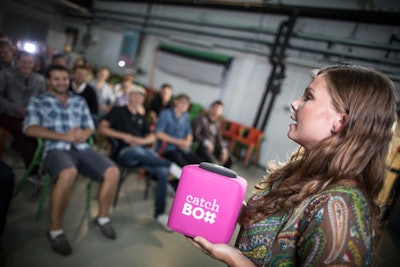
Catchbox is a wireless microphone to pass—or even throw—among speakers or audience members. The device consists of a microphone capsule secured with a magnet inside a soft, seven-inch cube that comes in blue, orange, green, or magenta. Catchbox communicates with an included receiver that can be connected to any sound system. To avoid unwanted noises, internal sensors turn the audio off when the cube is in motion. The company says the product is intended for smaller groups of as many as 100, and it provides the best-quality audio when no obstacles block the line of sight between the Catchbox and the receiver, which should be within 100 feet. As many as four of the units can be used at one time in a room. Catchbox is accepting preorders, with shipping scheduled for June.

Tangible Interaction will unveil its new LCD graffiti product at South by Southwest in March. In contrast to the company’s existing rear-projection digital graffiti wall, the new system takes up much less space and can be used outside in daylight. Planners provide the LCD screen, which can reach 70 inches, and Tangible Interaction provides the sensing system and two digital graffiti spray cans. The look of the graffiti wall is customizable with logos and backgrounds, and clients select colors, nozzle widths, stencils, and other features. After guests create their artwork, they can share the images on Facebook and Twitter or via email.
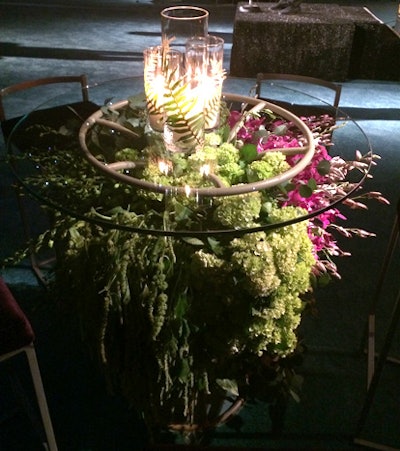
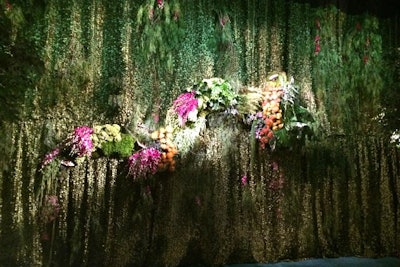
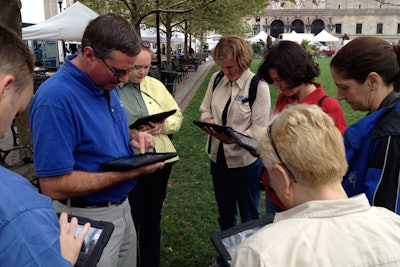
SmartHunts are iPad-based activities offered by Best TeamBuilding. Teams perform challenges, solve clues, and answer trivia questions, which can all be customized for the group. Participants also capture video and photos throughout the activities that can be shown at the conclusion of the event and shared through social media. SmartHunts feature two-way messaging so teams are connected with the hunt coordinator, who can track players using GPS and download photos and scoring. Themes include Amazing Chase, Mission Possible, Da Vinci Code, and an Event Kick-Off SmartHunt for conferences. Each hunt takes about three hours.
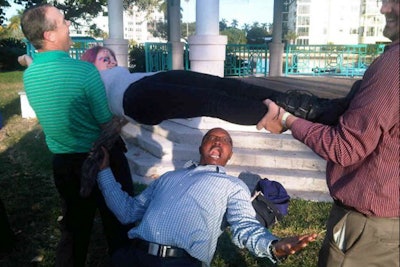
TeamBonding offers five “Smartphone Scaventures,” in which players use the company’s mobile app to search for items, complete tasks, and snap photos. Teams earn points based on activities completed and the quality of photos. Hosts can create a mission list from a bank of more than 100 options—such as asking participants to play “human limbo”—or they can design their own activities. Teams can compete against one another from multiple locations, whether in different cities or different countries. Each hunt takes about three hours to complete.
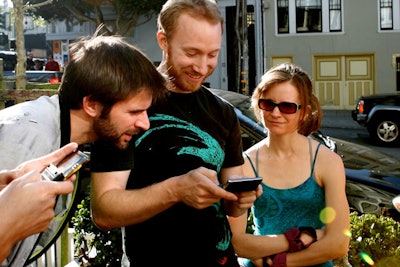
Go Game uses smartphones to guide players through a series of challenges. Teams of as many as 10 players are sent on a course to solve puzzles and complete tasks within a game zone, which could be a few city blocks or a convention center. Players complete missions by submitting digital photos and text answers through the phones. Examples include a National Mall game in Washington that asks players to locate specific buildings and answer questions about memorials. Go Game also provides costumed actors that interact with participants throughout the hunt. The game ends with a presentation of the photos and videos, which the host also receives on a USB drive.
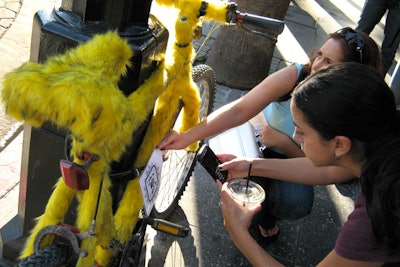
Wise Guys Events offers “Clockwise,” a cell phone scavenger hunt played with QR codes. Teams of as many as 10 players race against the clock to discover and decode 12 QR codes hidden within the game zone, usually a few city blocks. The codes may be located on a bike parked on a city street or on matchbooks players receive after giving a password to a bartender. When players scan the QR code, they get a password worth points at the end of the game and also instructions on how to complete an optional challenge for bonus points. Each hunt takes about four hours.
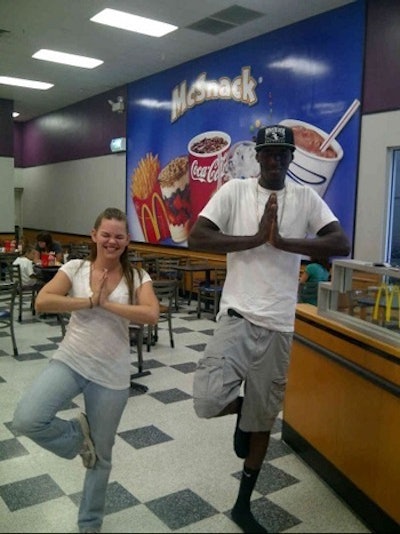
GooseChase is a D.I.Y. scavenger hunt platform. Hosts can choose from options in the “mission bank” or create one from scratch. Each mission has a set point value and can have images and links attached to it. Participants submit photos through the app as proof of completing each mission, which could include convincing a stranger to demonstrate a favorite yoga pose. Organizers can monitor the activity through the “Hunt HQ” on the GooseChase Web site and award points based on the submitted photos.
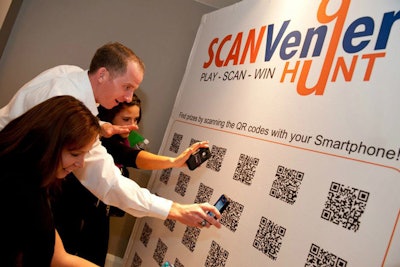
SCANVenger hunts are played using QR codes that can be placed throughout a venue, in an exhibit hall, or among a few city blocks. Players scan the codes and answer questions to earn points. Questions can be customized, for example, to quiz players about content learned at the event. Participants can also view the leaderboard on their devices, adding to the competition. SCANVenger also offers an interactive game wall—an 8- by 10-foot display of 30 QR codes—for hosts that want to offer a game without a physical hunt.
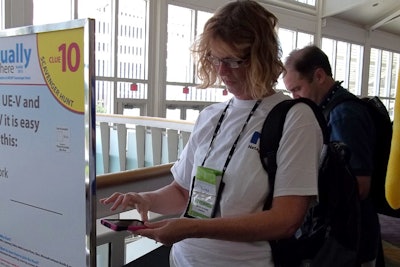
Wildly Different offers a hunt known as “Recess Anyone?” as well as custom hunts based on a client’s theme. Signs with riddles are placed throughout the hunt area. Teams or individuals use their smartphones to scan a QR code on the signs that leads them to a Web site with additional clues to answer the question. Hosts can determine how to set up the hunt: as a break between education sessions, a networking tool during a reception to encourage interaction, or as a way to get people moving around a trade show by placing clues in exhibitors’ booths.
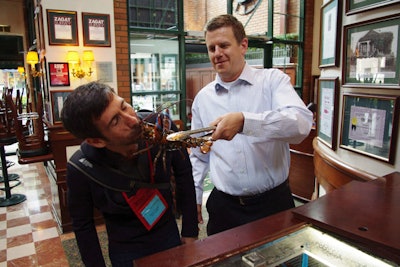
American Outback’s “Wild Goose Chase” scavenger hunt sends players on missions that vary from wacky—like kissing a lobster—to customized to match the event’s theme, location, or objectives. Teams access the missions using the company’s app, and the list can be completed in any order. The hunt can be played in a few hours or over several days during a conference. Players can view a leaderboard in the app to increase competition.
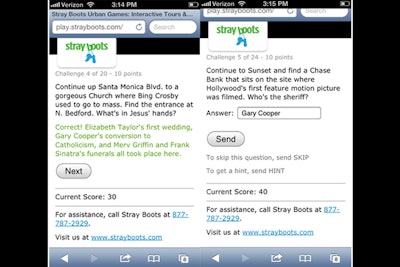
Stray Boots offers trivia-based walking tours of popular meeting destinations around the country, including Los Angeles, Chicago, New York, Miami, and Las Vegas. Players use their cell phones to complete challenges, solve riddles, and take photos, and they earn points along the way. Each activity includes interesting facts about the destination. Tours can be played via the Stray Boots app, text message, or on a mobile browser. For multiple teams, the game can be arranged so teams experience the same tour but take different routes.
